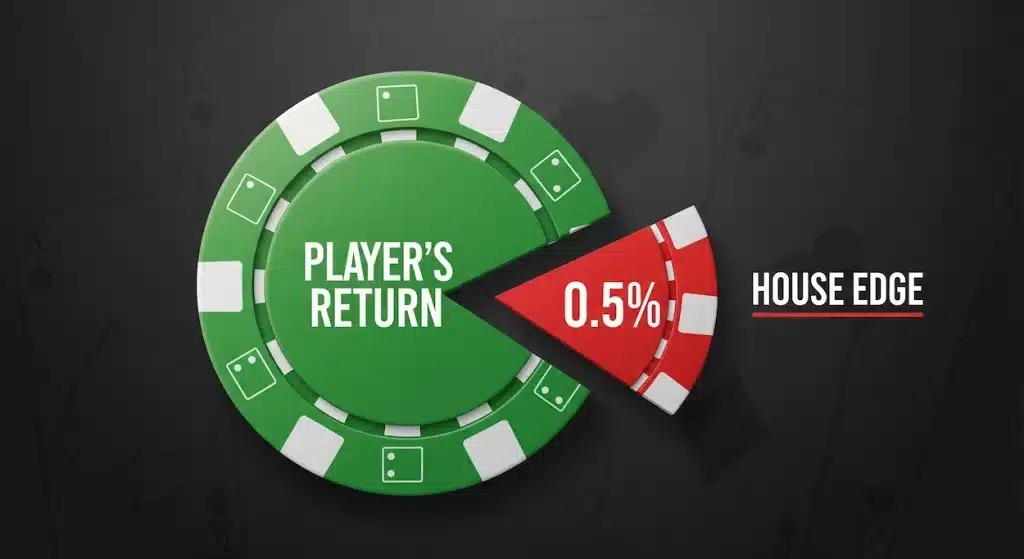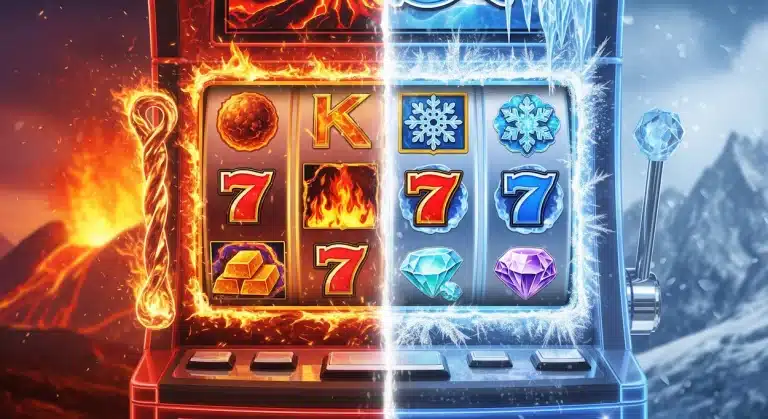The house edge is a fundamental concept in gambling, representing the casino’s built-in mathematical advantage over the player. In blackjack, understanding this edge is crucial for any player looking to move beyond basic strategy and into the realm of advanced play. This post will dissect the components of the house edge in blackjack, explain how it fluctuates based on rules and player decisions, and discuss how skilled players can minimize its impact to a near-zero level, or even turn it in their favor.
What Is House Edge?
The house edge is the long-term statistical advantage a casino holds in any given game. It’s expressed as a percentage of the player’s initial wager. For example, if a game has a 1% house edge, the casino expects to win, on average, one cent for every dollar wagered over millions of hands. This doesn’t mean you’ll lose exactly one cent every time you bet a dollar; rather, it’s a long-term average that ensures the casino’s profitability.
In blackjack, the house edge is not a fixed number. It’s a dynamic figure that is influenced by two primary factors: the rules of the game and the player’s strategy. A player who consistently makes poor decisions will face a much higher house edge than one who meticulously follows basic strategy. For a standard six-deck game where the dealer stands on a soft 17 (S17), and late surrender is available, the house edge against a player using perfect basic strategy is often around 0.5%. This is one of the lowest house edges of any casino game, making blackjack a favorite among shrewd gamblers.
How Rules Affect House Edge
The specific rules of a blackjack game are the most significant determinants of the casino’s advantage. Even seemingly minor rule variations can have a substantial impact on the house edge. Here are some of the most critical rules and their approximate effect on the house edge:
- Number of decks: The more decks used, the higher the house edge. A single-deck game has a lower house edge than an eight-deck game, all other rules being equal. The difference is subtle but measurable. For example, a six-deck game has a house edge roughly 0.02% higher than a two-deck game. This is because in a game with fewer decks, card counting is more effective, and the player can more accurately predict when the remaining cards are rich in high-value cards (aces and tens).
- Dealer hits or stands on a soft 17 (H17 or S17): This is one of the most critical rules. If the dealer hits on a soft 17 (H17), the house edge increases by about 0.22%. This is a significant disadvantage for the player because it gives the dealer more chances to improve their hand. You should always prefer a table where the dealer stands on a soft 17 (S17).
- Payout for blackjack: The standard payout for a blackjack (Ace and a 10-value card) is 3:2. Some casinos, however, offer 6:5, which is a massive increase in the house edge. A 6:5 payout on blackjack increases the house edge by approximately 1.4%. This is a terrible rule for the player and a clear sign that you should find another table. A $10 bet on a 3:2 table pays out $15, while on a 6:5 table, it only pays out $12.
- Doubling down rules: The ability to double down on any two cards is a powerful tool for the player. Some casinos restrict this to only certain totals (e.g., 9, 10, or 11). The more liberal the doubling-down rules, the better for the player. Doubling after splitting (DAS) also decreases the house edge by about 0.14%.
- Surrender: The option to surrender your hand and forfeit half your bet can be a valuable tool in certain situations. Late surrender, which is surrendering after the dealer has checked for blackjack, reduces the house edge by about 0.08%.
The Role of Basic Strategy
Perfect basic strategy is the scientifically proven, mathematically optimal way to play every hand in blackjack. It minimizes the house edge to the lowest possible figure for a given set of rules. Any deviation from basic strategy—such as hitting a hard 18 against a dealer’s 7 or splitting a pair of 10s—immediately increases the house edge. Think of basic strategy as your baseline, the foundation of all advanced play. Memorizing it is non-negotiable for anyone serious about the game.
The house edge against a player using perfect basic strategy is not a reflection of the player’s skill but rather a function of the game’s rules. The player who makes a mistake on a hand, no matter how small, is giving the house a greater edge on that specific hand. Over time, these mistakes compound, and the player’s long-term expectation of loss increases dramatically.
Counteracting the House Edge: Card Counting
For the most advanced players, the concept of house edge becomes a temporary, fluctuating phenomenon. Card counters, unlike basic strategy players, don’t view the house edge as a static percentage. They understand that the deck’s composition changes with every card that is dealt. A deck rich in high-value cards (aces and tens) is advantageous for the player, as it increases the probability of getting a blackjack, of the dealer busting, and of doubling down successfully.
Card counting systems, such as the Hi-Lo system, assign a value to each card (+1 for 2-6, 0 for 7-9, and -1 for 10-A). By keeping a running count and converting it to a true count, a skilled player can determine when the remaining deck is favorable. When the true count is positive, the player increases their bet size, effectively betting more when the house edge has shifted in their favor. In these situations, the player has a positive expectation, and the house edge is, for all practical purposes, a player edge.
This is why casinos actively try to detect and deter card counters. The house edge is their business model, and card counting directly undermines it. While the house edge is a statistical certainty over the long run for a player not altering their bets, for the card counter, it becomes a hurdle to be overcome and, eventually, a tool to be leveraged.
Understanding the house edge isn’t just about knowing the casino’s advantage; it’s about understanding the game’s core mechanics. It’s the difference between a casual player and a serious strategist. A serious player knows that every rule variation and every deviation from basic strategy adds to the house’s profit margin. By choosing the right games and playing a perfect strategy, a player can reduce the house edge to a point where they have a fighting chance and, with the added skill of card counting, even turn the tables on the casino.







